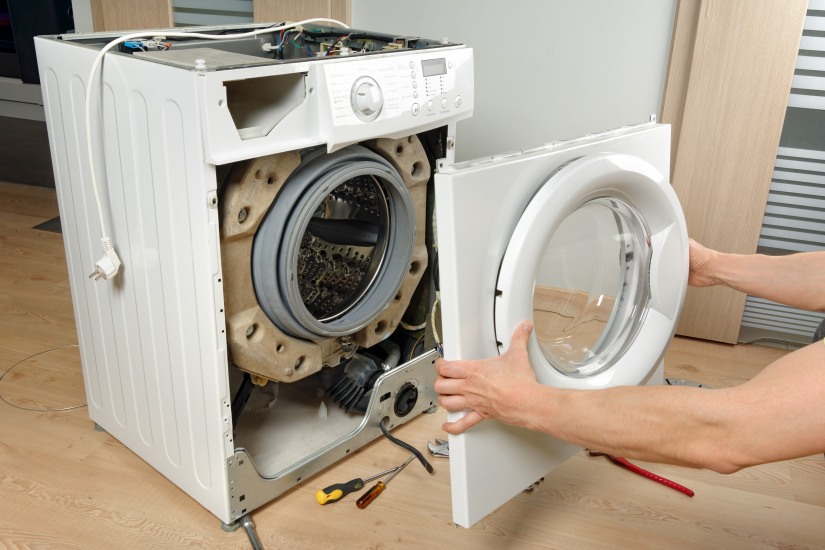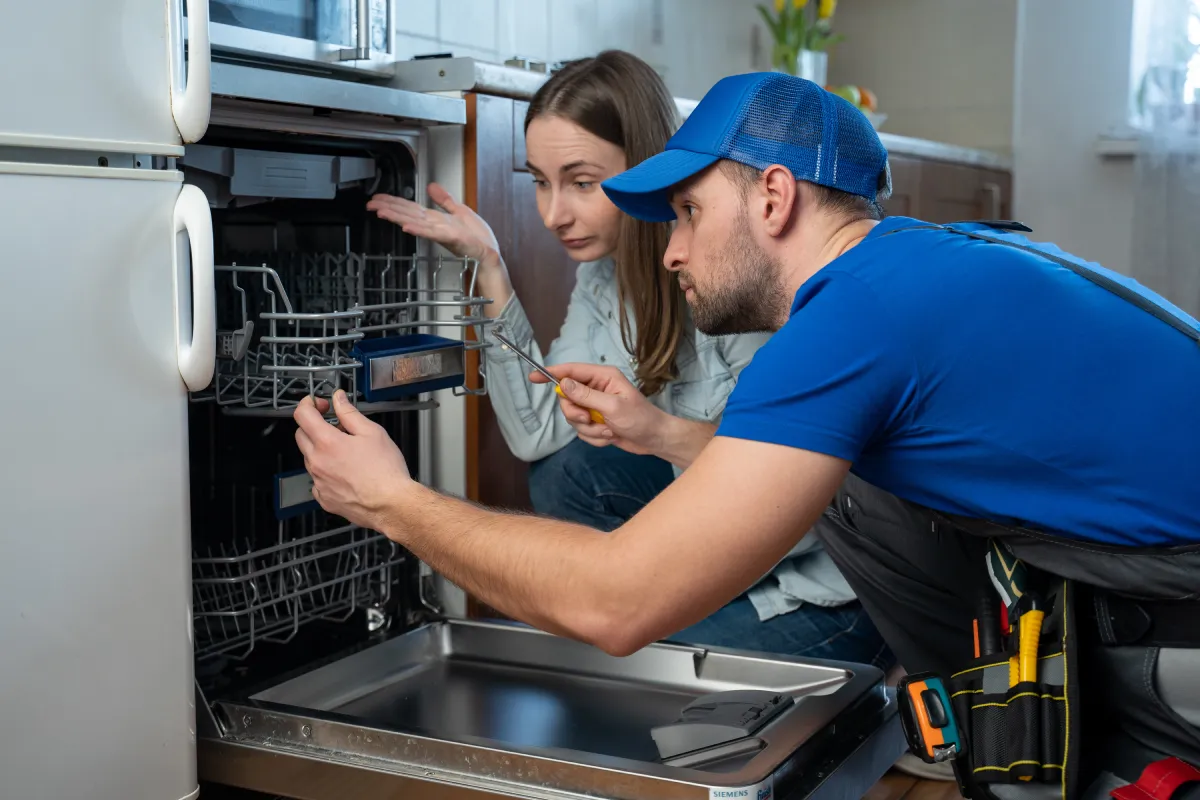The Ultimate Guide to Understanding Home Appliance Repair Work in your home
When your fridge quits cooling down or your oven declines to warmth, it can feel overwhelming. Understanding device fixing at home can conserve you money and time. You'll find out to identify signs, utilize necessary tools, and comply with a methodical troubleshooting process. Prior to you start, there are critical safety and security precautions you need to take right into account. What are the most typical problems, and just how can you repair them? Allow's discover the essentials.
Typical Home Appliance Troubles and Their Symptoms
When your appliances begin acting up, it's important to recognize the signs early. Neglecting them can result in larger issues and costly fixings. As an example, if your refrigerator isn't cooling properly, you may see cozy places or condensation creating. This might suggest a failing compressor or a blocked vent.Your dishwasher may show troubles with unclean recipes or unusual noises throughout cycles. If you listen to grinding or clanking, it's time to investigate.A washing maker that will not spin or drain can leave you with soaked laundry, recommending a blocked drain or a malfunctioning pump.Lastly, if your oven's temperature seems off or it takes for life to pre-heat, you could be managing a defective thermostat. By remaining sharp to these signs and symptoms, you can address issues before they escalate right into major repair services.
Necessary Tools for Appliance Repair Work
When you're taking on device fixings in the house, having the right tools is vital. Fundamental hand tools like screwdrivers and pliers will aid you disassemble and fix various home appliances, while electric testing devices guarantee you're functioning safely with circuitry. Allow's discuss what you require to begin on your repair work journey.
Fundamental Hand Tools
Having the right tools is essential for reliable device repair at home. Beginning with a dependable screwdriver set, including both flathead and Phillips types, as screws are typical in home appliance assembly. Pliers are additionally vital; they assist with gripping, turning, and cutting cords or small parts. A pair of needle-nose pliers can get to tight areas quickly. You'll require a good flexible wrench for tightening up or loosening up nuts and screws. An utility blade is helpful for puncturing product packaging or insulation. Ultimately, do not fail to remember a durable workbench or surface area to securely organize your tools and components. With these fundamental hand tools, you'll be well-prepared to tackle most device fixings that come your way.
Electrical Screening Devices
Along with fundamental hand tools, electric testing devices play an essential function in device repair. These devices help you detect electric issues and warranty home appliances operate securely. A multimeter is vital; it measures voltage, existing, and resistance, permitting you to determine problems promptly. A non-contact voltage tester is another must-have, allowing you detect online cables without making direct contact, boosting your safety. Clamp meters are wonderful for measuring present circulation in cables without detaching them, conserving you time and initiative. Furthermore, circuit testers can rapidly inspect if electrical outlets are operating appropriately. By utilizing these gadgets, you'll simplify your troubleshooting procedure and enhance your repair work skills, making device maintenance a great deal simpler.
Step-by-Step Overview to Diagnosing Device Issues
When your home appliance acts up, it can be discouraging, yet identifying the issue does not have to be frustrating. You'll find out to determine typical issues and apply reliable fixing methods. Allow's walk via the steps to obtain your appliance back in functioning order.
Usual Appliance Issues

Repairing Techniques Discussed

Repairing Major Cooking Area Devices: A Closer Look
Have you ever questioned how to take on common concerns with your kitchen devices? Repairing major kitchen devices like fridges, ovens, and dishwashing machines can be easier than you believe. Beginning by identifying the issue-- whether it's a fridge not cooling or an oven that won't heat up. Frequently, a simple reset or examining the source of power can resolve the issue.For refrigerators, clean the condenser coils and examine the door seals. If your stove's not heating, examine the heating element and thermostat. Dishwashing machines may just need a tidy filter or a reset to get them back at work. Constantly disconnect the appliance before diving right into repair services to ensure your safety.Don' t neglect to get in touch with the user guidebook for certain fixing pointers related to your version. With a bit of persistence and the right devices, you can confidently deal with device repairs and conserve cash at the same time!

Fixing Washing Equipments: Tips and Techniques
When your laundry devices begin acting up, it can feel frustrating, yet repairing them doesn't need to be a hassle. Start by inspecting the power supply. Confirm the appliance is plugged in and the outlet is functioning. Next off, examine the door or lid switch; a damaged button can protect against the machine from operating.For washers, if it's not spinning, inspect for unbalanced loads. Rearranging the clothes might solve the issue. If your clothes dryer isn't heating, tidy the lint filter and inspect the vent for blockages.Listen for unusual sounds; they can indicate a problem. If your appliance is dripping, check the hose pipes for splits or loosened links. Record any kind of error codes shown on electronic screens, as they can lead you in identifying the issue. Consult the user guidebook for specific fixing pointers connected to your version.
Safety Preventative Measures to Take During Repairs
Prior to you begin any device repair work, it's necessary to prioritize security to avoid accidents or injuries. First, disconnect the device or switch off the breaker to ensure no power reaches it while you function. Usage protected tools to decrease the threat of electric shock. Use safety goggles and gloves to secure yourself from sharp edges or debris (Washer dryer repair service Dependable Refrigeration).Make certain your work area is clean and well-lit, so you can see what you're doing. Keep youngsters and pets far from the location to avoid interruptions and prospective hazards. If you're dealing with gas appliances, be extra careful; check for leaks before proceeding.Take your time, and don't rush through repair services. If you feel unclear concerning any step, it's much better to stop and research than to guess. Complying with these preventative measures will certainly aid create a much safer atmosphere for your DIY home appliance fixing job
When to Call a Professional for Assistance
Exactly how do you understand if it's time to hire a professional for device fixings? If you have actually tried standard troubleshooting without success, it's a clear indicator. For example, if your appliance still will not start or shows unusual noises after resetting it, don't wait to seek professional help.When you observe leaks, smoke, or burning smells, focus on security and call a professional instantly. These concerns can result in more significant damages or pose risks to your home.Also, if your device is under service warranty, calling a professional is often the most effective route. They can guarantee that repair services will not nullify your warranty, saving you cash in the long run.Finally, if you're unclear or uneasy with complicated repair services, it's smart to leave it to the experts. Remember, dealing with complicated problems without the right expertise can cause costly mistakes. Count on an expert when in question!
Often Asked Concerns
Exactly How Can I Avoid Device Problems in the Future?
To avoid device issues in the future, you must perform normal maintenance, check for deterioration, tidy filters, and stay clear of overloading. Remaining proactive will assist expand their life expectancy and keep them running efficiently.
What Are the A Lot Of Common DIY Appliance Repair Service Mistakes?
You might forget safety precautions, avoid troubleshooting actions, or utilize wrong devices when trying do it yourself device repairs. Rushing the procedure or disregarding supplier guidelines can cause more substantial concerns and costly blunders. Stay person and educated!
Exactly how Do I Know if a Part Needs Replacement?
You can inform if a part requires replacement by inspecting for unusual sounds, leaks, or irregular efficiency. If the device struggles to run correctly or shows noticeable damage, it's most likely time for a substitute.
Can I Utilize Generic Parts for Home Appliance Repairs?
Yes, you can utilize common components for appliance repair work, however identify they're compatible - Maytag Washing machine repair Dependable Refrigeration & Appliance Repair Service. Generic parts could save you cash, yet they might influence efficiency or durability, so evaluate your choices very carefully before deciding
What Guarantees Cover Home Appliance Repairs?
The majority of device guarantees cover repair services for manufacturing defects, but they commonly exclude damage from misuse. Check your warranty terms carefully, as some might require utilizing licensed specialists and original components for insurance coverage to stay legitimate.